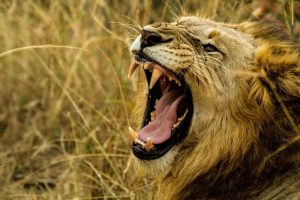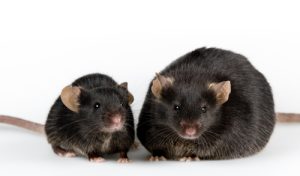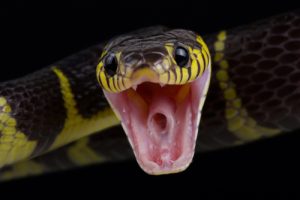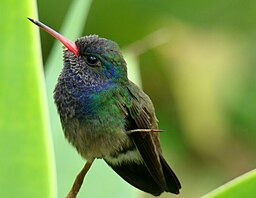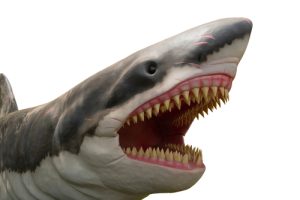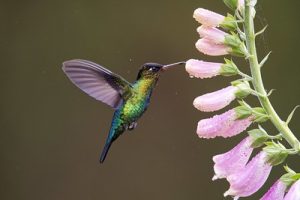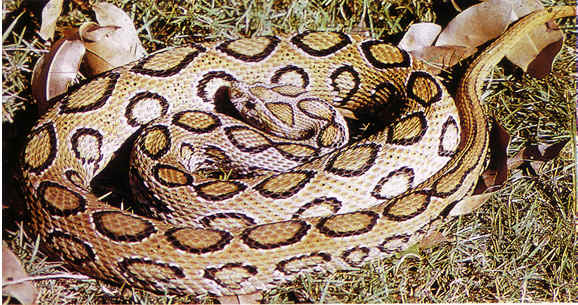
10. Cape Buffalo
Cape buffalo are found in Saharan Africa and are a relatively mild species when left alone, preferring to travel in massive herds to graze in the early morning and late afternoon hours or to gather around watering holes to stay hydrated. However, if an individual (or its calf) is threatened or wounded, they become a very aggressive and dangerous animal. Reportedly responsible for killing more hunters on the continent than any other creature, they can grow up to nearly six feet tall and weigh close to a ton, charge at speeds of up to 35 miles per hour. They’re even known to continue charging no matter whether they’re injured or not and are known to attack moving vehicles.
9. Cone Snail
Cone snails are found in the warm waters in the tropics, they can be seen in shallow water usually close to shore, in rock pools etc. But as calm and docile as they sound, they have harpoon-like “teeth” contain a complex venom known as a conotoxin, making them one of the most venomous species of snails. If you suffer the unlucky fate of becoming one of the handfuls of people stung, rush to the hospital, as there is no antivenom. The toxin stops nerve cells from communicating with one another; so the creature not only causes paralysis within moments but, per its nickname of “cigarette snail,” affords you about enough time to smoke a cigarette before you die.
8. Golden Poison Dart Frog
Its poison, called batrachotoxin, is so potent that there’s enough in one frog to kill ten grown men, with only two micro-grams, roughly the amount that would fit onto the head of a pin, needed to kill a single individual. But what makes the amphibian especially dangerous is that its poison glands are located beneath its skin, meaning a mere touch will cause trouble. Little wonder the indigenous Emberá people have laced the tips of their blow darts used for hunting with the frog’s toxin for centuries. Sadly, deforestation has landed the frog on several endangered lists, but even if you do have a rare sighting when hiking, don’t go reaching for it.
7. Box Jellyfish
These transparent, nearly invisible invertebrates are considered by the National Oceanic and Atmospheric Administration as the most venomous marine animal in the world. contain up to 15 tentacles at the corners, with each growing as much as 10 feet long, all lined with thousands of stinging cells that contain toxins that simultaneously attack the heart, nervous system, and skin cells. While an antivenom does exist, the venom is so potent and overwhelming that many human victims, of the hundreds of reported fatal encounters each year, have been known to go into shock and drown or die of heart failure before reaching shore.
6. Pufferfish
Though they’re the second most poisonous vertebrate on the planet (after the golden arrow dart frog), they’re arguably more dangerous as their neurotoxin, called tetrodotoxin, is found in the fish’s skin, muscle tissue, liver, kidneys, and reproductive organs, all of which must be avoided when preparing the creature for human consumption. You must be specially qualified to cook fugu, as it’s very easy to mess up when preparing the dish. The toxin essentially chokes you as it causes your muscles to go into spasm, meaning the important muscles that you use to breathe, and stay alive, become obsolete.
5. Black Mamba
The black mamba is found in Africa and can grow up to 14 feet long, whilst being the fastest of all snakes, moving speeds of up to 12.5 miles per hour. Thankfully, black mambas usually only strike when threatened but when they do, they’ll bite repeatedly, delivering enough venom in a single bite to kill ten people. And if you don’t receive an antidote as soon as possible, you’ll be dead within 20 minutes.
These reptiles can grow up to 23 feet in length and weigh more than a ton and are known to kill hundreds each year, with crocodiles as a whole responsible for more human fatalities annually than sharks. Saltwater crocodiles are especially dangerous as they’re excellent swimmers happy in either salt or freshwater, and can quickly bite delivering 3,700 pounds per square inch (psi) of pressure, rivalling that of the long-extinct T. Rex. If that’s not enough to scare you, put it in perspective: humans chomp into a well-done steak at around 200 psi, a mere five per cent of the strength of a crocodiles bite.
3. Tsetse Fly
The Tsetse Fly is commonly found in sub-Saharan countries, especially those in the centre of the continent including Sudan, the Democratic Republic of the Congo, and Angola. While the flies themselves are nasty blood-sucking bugs that usually feed during the peak warm hours, the danger lies in the protozoan parasites they spread known as Trypanosomes. These microscopic pathogens are the causative agent of African Sleeping Sickness, a disease marked by neurological symptoms including behavioural changes, poor coordination, as well as the disturbances in sleeping cycles that give the illness its name. It can cause death if left untreated. Just like the next insect on the list, these things are small and fly around in big numbers, making it hard to eradicate the species or even just prevent illness.
2. Mosquito
The mosquito is found in almost every region on the planet except Antarctica, they are the primary carriers of diseases such as malaria, Chikungunya, encephalitis, elephantiasis, yellow fever, dengue fever, West Nile virus, and the Zika virus, which collectively afflict an estimated 700 million and kill roughly 725,000 people each year. As the World Health Organization notes, more than half of the human population is currently at risk from mosquito-borne diseases. And even scarier, its been estimated that in the history of our species, almost 50% of all people that have ever lived have died from malaria… and there still isn’t a vaccine.
1. Humans…
Since we’ve been killing each other for 10,000 years, with the total deaths from war alone estimated at between 150 million and 1 billion, its safe to say we’re the most destructive species on the planet. As a result of our actions, many species have become extinct and habitats have been destroyed. Even though we are probably living in the most orderly period of time so far, we still continue to attack each other, hunt other animals, and destroy the planet slowly, making us the most dangerous animals on earth.
